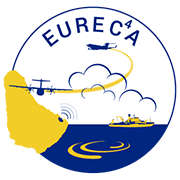Pseudo Global Warming: Methodology
In pseudo-global warming (PGW) experiments, selected changes in the climate system are imposed on a Limited Area Model (LAM) simulation by modifying the spatial lateral boundary conditions. In simple mathematical terms, the PGW concept can be expressed as:
PGW = HIST + Delta
In this symbolic equation, HIST represents the present day lateral boundary conditions. These will be deduced from the ECMWF analysis for the SRM simulations and from COSMO for the Large Eddy Simulations. The lateral boundary conditions of the future climate simulations are obtained by adding a pertubation field Delta to the present day boundary conditions HIST. Delta can be computed from seperate climate projections as:
Delta = SCEN - CTRL
Where SCEN is a future time slice of a climate projection and CTRL is the corresponding historical time slice coming from a GCM (see Fig 1). The changes cover thermodynamic and dynamic aspects and are designed to have a seasonal cycle, but they neglect potential changes in interannual variability.

Fig.1 Schematics of the principles of the Pseudo Global Warming (PGW) framework
The perturbation fields Delta are meant to be based on 30-year monthly means of the driving GCM. The required GCM fields include three-dimensional fields of temperature, specific humidity and wind (T, qv, u, v), as well as the geopotential height field (phi) on at least one pressure level. Monthly mean changes of these fields are linearly interpolated to the target date, and then merged with ERA5 information.
In order to prepare PGW simulations for the EUREC4A MIP, perturbation fields D have been derived from AMIP and AMIP-p4K experiments. The perturbations fields Deltas are derived from different GCMs (GFDL, HadGEM3, IPSL and NorESM) that have different Equilibrium Climate Sensitivities (ECS). The proposal is to rerun the present-day SRM and LEM simulations on their respective domains and duration and use the results to assess how the various cloud patterns will respond to the warming and to quantify the associated change in cloud radiative effect (CRE). This should fill an important gap in our understanding and our assessment of the role of mesoscale organization on low-cloud feedback.
References:
Brogli, R., C. Heim, J. Mensch, S.L. Sørland, and C. Schär, 2023: The pseudo-global-warming (PGW) approach: Methodology, software package PGW4ERA5 v1.1, validation and sensitivity analyses. Geosci. Model Dev., 16, 907–926, doi.org/10.5194/gmd-16-907-2023
Heim, C., D. Leutwyler, and C. Schär, 2022: Application of the Pseudo-Global Warming Approach in a Kilometer-Resolution Climate Simulation of the Tropics, J. Geophys. Res. Atmos., accepted
